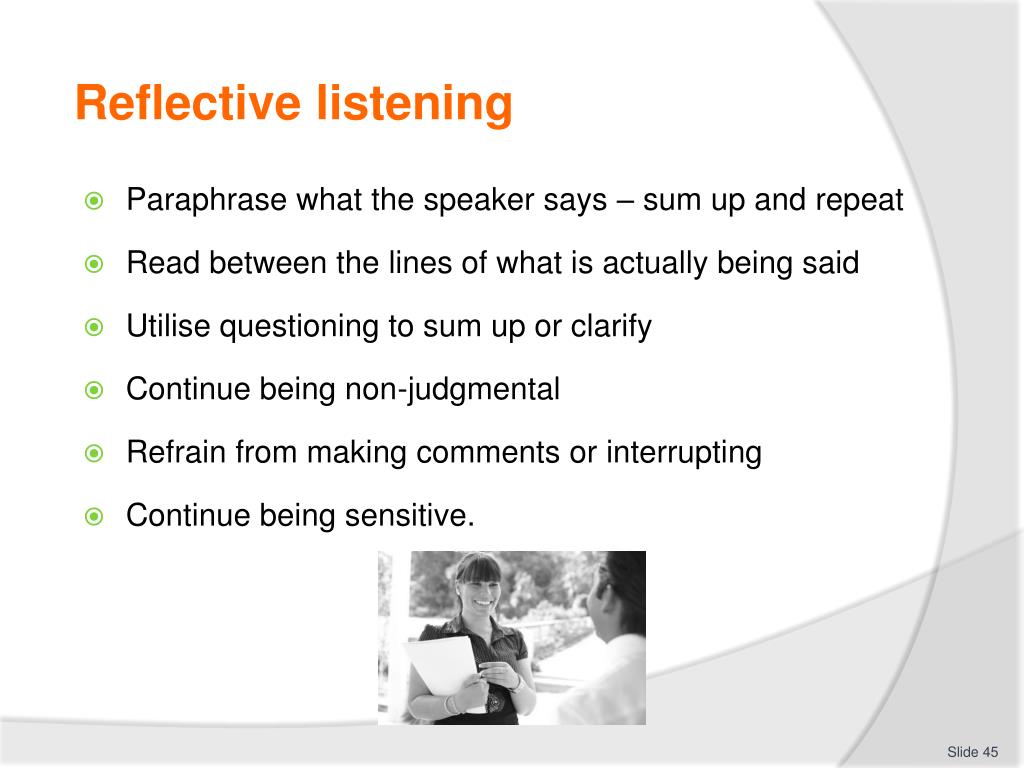


When someone listens actively, they are putting their focus into both hearing the information, and connecting all the elements to gain an understanding of instructions or the idea that is being conveyed. The difference between active and passive listening is that as a passive listener, you are hearing what someone is saying to you, but not really trying to understand their message. How active listening can help build connectionsĪctive listening is a way of paying attention to someone who is communicating with you, showing them that you are interested in what they have to say and demonstrating that you are trying to understand them.Īctive listening encourages children to open up to you when they are feeling distressed or despondent, as they will feel empathy through your words, behaviour and body language. Educators can also use active listening to role model empathy and consideration for others, which supports social-emotional development. She then waited until the cause for the upset became clear, and worked with Jeremy to solve the problem, letting him lead the way.Īctive listening is not just a problem-solving tool, it is also an effective way to connect with children and build trust and mutual respect. Using empathy, she recognised and validated the young boy’s emotions, and comforted him physically to ease his sadness.

In the second interaction, however, the educator employed active listening techniques to connect with Jeremy, discover the reason for his distress and find a solution. The first educator’s reaction was disrespectful and displayed a lack of empathy, understanding and tolerance. While Jeremy’s expressive language was limited, his English comprehension was very good, and he clearly understood what was being said about him. The educator made assumptions about what was going on and was not truly listening to what the child was trying to communicate. In the first interaction the child is made to feel unintelligent for not being able to express himself verbally, and his emotions were not validated. Together the two children and the educator went over to the fence and found the toy spider on the ground near the fence. Instead of making assumptions about the cause of his upset, she said: “I can see that you are sad,” and put her arm around his shoulder.Īnother child approached them and said: “I think he is sad because he lost his toy spider.” The educator then said to the distressed child: “Is that right Jeremey, did you lose your spider?” He nodded in agreement. She then walked away, clearly frustrated, saying to everyone around her: “I don’t know what he wants, I can’t understand him.”Īnother educator saw the interaction unfold and walked over to Jeremy, who was still upset. The educator said: “There’s no spider there. The child took the educator’s hand and walked over to a fence, again saying: “Spider, spider.” Jeremy, a boy with limited English, was crying in the sandpit and saying ”spider, spider.”Īn educator approached Jeremy and asked him a range of questions: “What’s wrong?” she asked. “Where’s the spider? Show me.” Let’s look at an example provided by a CELA team member to demonstrate how important it is to listen closely, rather than assume we understand what a child is trying to say: So how can educators best listen to children to really get to the bottom of what they are saying?Īctive listening can be especially tricky for educators responsible for children with limited words, or children with English as a second language, but there are techniques that can be employed to clarify meaning for the listener. Active listening is an excellent strategy for supporting trust and the development of strong educator/child relationships. For children to flourish they need to feel secure, not just in their environment but also in their relationships.


 0 kommentar(er)
0 kommentar(er)
